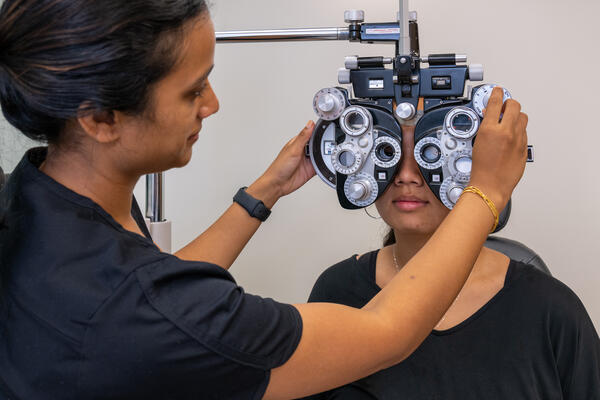The Benefits And Drawbacks of Different Refractive Surgeries for Boosted Eyecare

LASIK Surgical Treatment
LASIK surgical procedure is a generally performed refractive treatment that aims to remedy vision problems such as nearsightedness, farsightedness, and astigmatism. During the treatment, a slim flap is produced on the cornea, and a laser is used to reshape the underlying tissue, correcting the refractive mistake.
One of the key advantages of LASIK surgical treatment is the quick enhancement in vision experienced by several individuals. It is vital for individuals considering LASIK surgical treatment to go through a comprehensive assessment by an eye treatment professional to determine if they are ideal prospects for the treatment.
PRK Treatment
The PRK treatment, likewise referred to as Photorefractive Keratectomy, is a kind of refractive surgical treatment that intends to deal with vision concerns comparable to LASIK surgery. Unlike LASIK, which entails developing a flap in the cornea, PRK works on the surface area layer of the cornea. Throughout the PRK treatment, the external layer of the cornea, called the epithelium, is eliminated to allow reshaping of the underlying corneal cells with an excimer laser. This improving aids to remedy refractive mistakes such as nearsightedness, astigmatism, and farsightedness.
One of the advantages of PRK over LASIK is that it eliminates the danger of flap-related complications because no flap is produced throughout the surgery. This can be valuable for people with slim corneas or those involved in get in touch with sporting activities where eye injury is an opportunity. However, the recovery time for PRK is typically longer compared to LASIK, as the external layer of the cornea requires time to restore after the treatment. In spite of the longer healing period, PRK can be a suitable option for people seeking vision modification surgical procedure.
SMILE Surgery
A sophisticated refractive surgical procedure strategy gaining appeal in the field of ophthalmology is SMILE Surgical procedure. Little Laceration Lenticule Removal (SMILE) is a minimally invasive treatment that fixes vision by reshaping the cornea making use of a femtosecond laser. Unlike standard LASIK surgical procedure, SMILE Surgical treatment involves producing a small incision in the cornea to extract a lenticule, which causes much less disruption to the corneal framework and potentially much faster websites recuperation times.
Among the primary benefits of SMILE Surgery is its capacity to treat myopia (nearsightedness) and astigmatism with high precision, causing outstanding aesthetic outcomes for individuals. The minimally invasive nature of the procedure also reduces the danger of difficulties such as dry eye syndrome, making it a desirable choice for people looking for refractive surgical procedure.

LASEK Method
Having actually explored the benefits and considerations of SMILE Surgical treatment, an additional significant refractive surgical procedure technique worth checking out is the LASEK Strategy. LASEK, which represents Laser-Assisted Subepithelial Keratectomy, is a kind of laser eye surgical treatment that intends to correct refractive errors such as nearsightedness (nearsightedness), hyperopia (farsightedness), and astigmatism.
Unlike LASIK, LASEK does not entail producing a corneal flap. Instead, during a LASEK procedure, the surgeon utilizes a diluted alcohol solution to loosen the thin outer layer of the cornea, understood as the epithelium.
One of the primary advantages of LASEK is that it can be ideal for people with thin corneas that might not be great candidates for LASIK. Additionally, LASEK commonly leads to marginal post-operative pain and a quicker healing time compared to PRK. The aesthetic healing process with LASEK may be slightly longer than with LASIK.
Implantable Call Lenses
Implantable Call Lenses use a long-term vision modification service for individuals seeking an option to conventional get in touch with lenses or my site glasses. These lenses, also called anchor phakic intraocular lenses, are operatively inserted into the eye to remedy refractive errors such as nearsightedness (nearsightedness), hyperopia (farsightedness), and astigmatism. eye doctors in andalusia. Unlike typical contact lenses that sit on the surface area of the eye, implantable get in touch with lenses function within the eye itself, offering clear vision without the demand for daily upkeep or removal
One of the vital benefits of implantable get in touch with lenses is their permanence. When put, they can remain in the eye indefinitely, using stable and constant vision adjustment. Furthermore, these lenses can be an excellent choice for people that are not good candidates for laser eye surgical procedure or that choose a reversible vision modification treatment.
However, implantable contact lenses do bring some dangers, consisting of the capacity for cataracts or boosted eye stress. It is essential for people considering this option to seek advice from an eye treatment specialist to establish if implantable call lenses are the right option for their certain requirements and eye health and wellness.
Final Thought
In final thought, each type of refractive surgical treatment has its own advantages and drawbacks. LASIK surgical procedure is popular for its quick recovery time, while PRK procedure may be suitable for people with slim corneas.

In General, SMILE Surgery presents a promising alternative for people looking to enhance their vision with refractive surgery.